Rabbit’s long-awaited AI bot will try to help you do anything (keyword is ‘try’)
“Find me an authentic recipe for khao soi, then put all the ingredients into my Amazon cart.” I speak these words into my Rabbit R1 not knowing what will happen next. The hyped walkie talkie for AI sold 100,000 units early in the year, winning people over with its industrial design from Teenage Engineering. But its approach to UX was equally exciting, teasing a whole new metaphor in artificial intelligence. Instead of apps, it proposed rabbits—little programmable AI agents that could hop into apps for you to do things like book a trip or fix a photo. But the rabbits never shipped with the R1’s initial release, and the device itself left most people disappointed by overhype. Half a year later, only about 5% of Rabbit R1 buyers are using the device at any time, though the company has quadrupled its engineering staff, dropped over a dozen updates, and as its founder Jesse Lyu told us last month at the Fast Company Innovation Festival, is committed for the long run. [Image: Rabbit] So, what have all those engineers been working on? The rabbits! Albeit in a new form, with a new approach that Rabbit owners can test now called the LAM Playground. (The LAM stands for “Large Action Model.”) Tell your Rabbit to do anything, and it will surf through websites, searching, poking at buttons, and filling fields, in an attempt to do whatever you want, automatically, by using a mix of visual and language intelligence. Realistically, the premise is too good to be true, especially as a beta product produced by a startup that underwhelmed its customers at launch. Intellectually, though, it’s hard not to engage. We’ve already seen what the first wave of modern AI can do best: synthesize and shorten lots of information in a (mostly reliable) way. We’ve built a sea of systems that search and shrink, but don’t actually do anything. Rabbit’s experiment is about adding real agency to AI—to not simply task it with answering a question but using that information to complete a job. Think of it like an assistant that can actually do the work instead of just telling you the work to be done. [Screenshot: courtesy of the author] Testing LAM Playground After asking the R1 to “Find me an authentic recipe for khao soi, then put all the ingredients into my Amazon cart,” I watched it get to work surfing the web. (You can actually follow the system as it navigates websites in the cloud through Rabbit’s website, or you can simply listen as the R1 announces each step aloud.) After finding a food blog, the Rabbit announced steps like “Clicking on the jump-to recipe button.” (AI is just like us!) Slowly—as each step in the sequence takes nearly a minute—the system hops over to Amazon and starts searching for each item one-by-one, adding them to my cart. In theory, I can even tell it to check out for me . . . though I got a bit shy at Amazon’s absurd costs for spices. [Photo: courtesy of the author] When I asked Lyu what happens if, say, the AI goes haywire, and orders you 1,000 TVs instead of just one, he noted that’s why the user can follow the process step-by-step (and at any time, you can just say, “stop.”) Of course, following along defeats the point of assigning this little AI agent to do a task for you in the first place—there’s no task more futile than micromanaging a machine that will be worse at doing things than yourself—but this is the “LAM Playground,” after all, not the LAM NFL. [Screenshot: courtesy of the author] I find the LAM Playground works for just about any “find X and add it to my Amazon” I can imagine. I ask the system to search Reddit for the 3 best Japanese light novels of 2024 and add them to my cart. To be able to tell the system to source its conclusions based upon a certain source, be it message boards or publications, is a compelling use case for a dedicated web assistant. But after a few reps of this, I realize I’d ostensibly rebuilt the Amazon Dash button, albeit slower. The distant promise of a web genie What else could I do? It’s always hard to make a system that claims it can do anything actually do something. I found myself asking friends what I should do with this magic tool and getting little in ideas. I tried having it solve a sudoku puzzle, but the system got stumped and suggested I take over. When I asked Rabbit to sign up for an X account and then tweet “Hello World,” using any account name and password it wanted, it did attempt to make an account, but it got stuck filling in a date of birth. Then it suggested I could go to X’s website and “easily set up” my own account and tweet my intended message. Yes, I know! [Screenshot: courtesy of the author] I was tempted to have it assemble lists of things for me in a Google Doc—like stories I’d written on various topics—basically treating this smart web crawler as a fully automated version of Notion. But the system doesn’t store logins at the moment, and juggling these tasks manually through their l
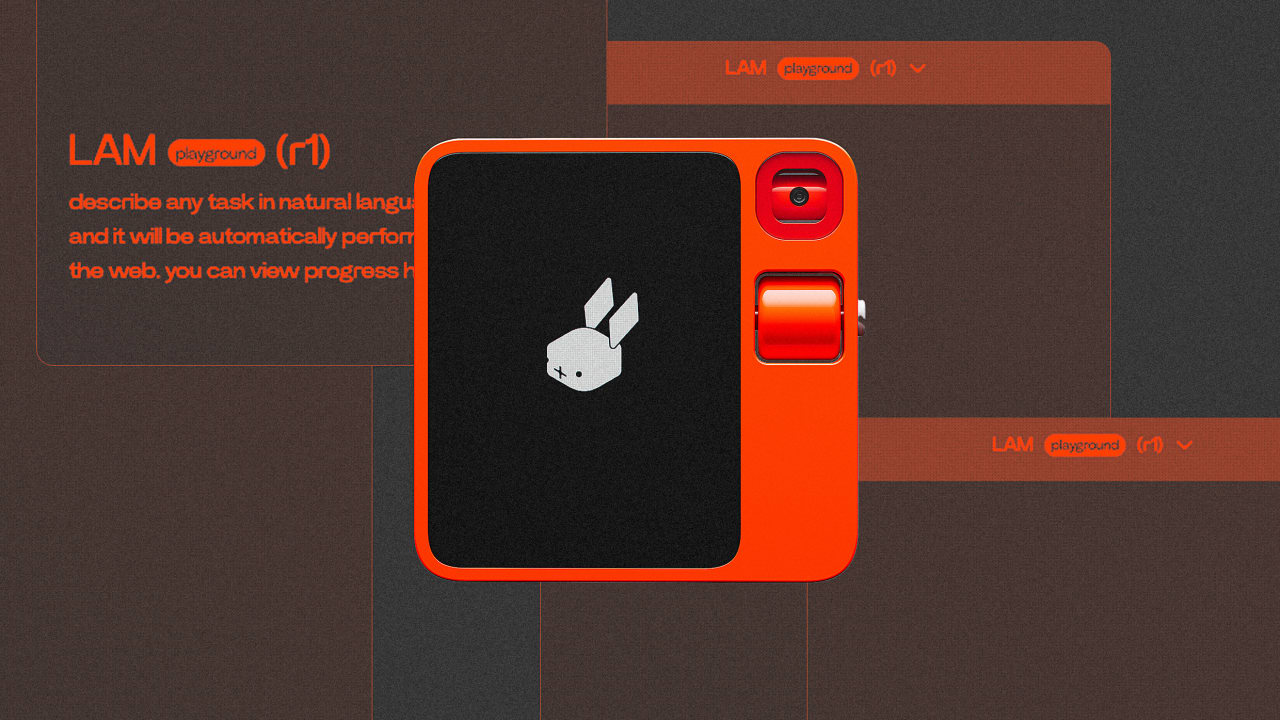
“Find me an authentic recipe for khao soi, then put all the ingredients into my Amazon cart.”
I speak these words into my Rabbit R1 not knowing what will happen next. The hyped walkie talkie for AI sold 100,000 units early in the year, winning people over with its industrial design from Teenage Engineering. But its approach to UX was equally exciting, teasing a whole new metaphor in artificial intelligence. Instead of apps, it proposed rabbits—little programmable AI agents that could hop into apps for you to do things like book a trip or fix a photo.
But the rabbits never shipped with the R1’s initial release, and the device itself left most people disappointed by overhype. Half a year later, only about 5% of Rabbit R1 buyers are using the device at any time, though the company has quadrupled its engineering staff, dropped over a dozen updates, and as its founder Jesse Lyu told us last month at the Fast Company Innovation Festival, is committed for the long run.

So, what have all those engineers been working on? The rabbits! Albeit in a new form, with a new approach that Rabbit owners can test now called the LAM Playground. (The LAM stands for “Large Action Model.”) Tell your Rabbit to do anything, and it will surf through websites, searching, poking at buttons, and filling fields, in an attempt to do whatever you want, automatically, by using a mix of visual and language intelligence.
Realistically, the premise is too good to be true, especially as a beta product produced by a startup that underwhelmed its customers at launch. Intellectually, though, it’s hard not to engage. We’ve already seen what the first wave of modern AI can do best: synthesize and shorten lots of information in a (mostly reliable) way. We’ve built a sea of systems that search and shrink, but don’t actually do anything.
Rabbit’s experiment is about adding real agency to AI—to not simply task it with answering a question but using that information to complete a job. Think of it like an assistant that can actually do the work instead of just telling you the work to be done.
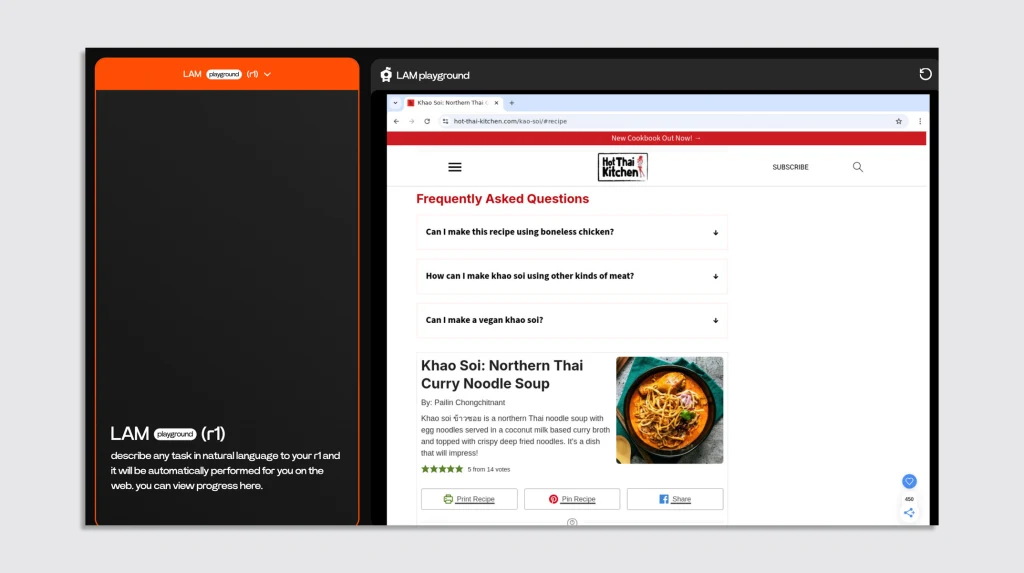
Testing LAM Playground
After asking the R1 to “Find me an authentic recipe for khao soi, then put all the ingredients into my Amazon cart,” I watched it get to work surfing the web. (You can actually follow the system as it navigates websites in the cloud through Rabbit’s website, or you can simply listen as the R1 announces each step aloud.)
After finding a food blog, the Rabbit announced steps like “Clicking on the jump-to recipe button.” (AI is just like us!)
Slowly—as each step in the sequence takes nearly a minute—the system hops over to Amazon and starts searching for each item one-by-one, adding them to my cart. In theory, I can even tell it to check out for me . . . though I got a bit shy at Amazon’s absurd costs for spices.
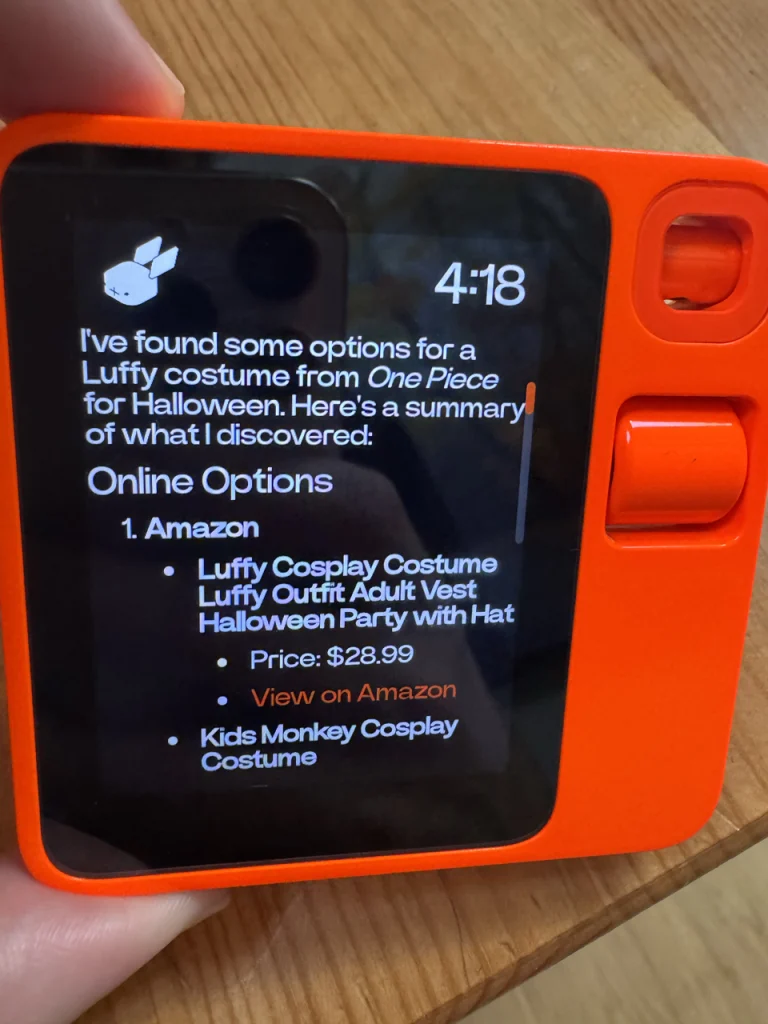
When I asked Lyu what happens if, say, the AI goes haywire, and orders you 1,000 TVs instead of just one, he noted that’s why the user can follow the process step-by-step (and at any time, you can just say, “stop.”) Of course, following along defeats the point of assigning this little AI agent to do a task for you in the first place—there’s no task more futile than micromanaging a machine that will be worse at doing things than yourself—but this is the “LAM Playground,” after all, not the LAM NFL.
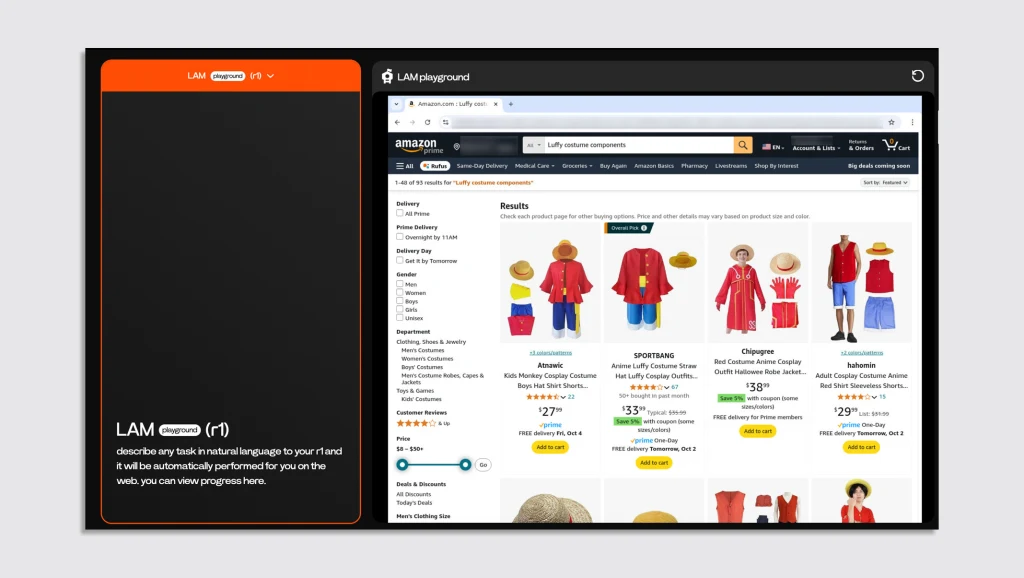
I find the LAM Playground works for just about any “find X and add it to my Amazon” I can imagine. I ask the system to search Reddit for the 3 best Japanese light novels of 2024 and add them to my cart. To be able to tell the system to source its conclusions based upon a certain source, be it message boards or publications, is a compelling use case for a dedicated web assistant. But after a few reps of this, I realize I’d ostensibly rebuilt the Amazon Dash button, albeit slower.

The distant promise of a web genie
What else could I do? It’s always hard to make a system that claims it can do anything actually do something. I found myself asking friends what I should do with this magic tool and getting little in ideas. I tried having it solve a sudoku puzzle, but the system got stumped and suggested I take over. When I asked Rabbit to sign up for an X account and then tweet “Hello World,” using any account name and password it wanted, it did attempt to make an account, but it got stuck filling in a date of birth. Then it suggested I could go to X’s website and “easily set up” my own account and tweet my intended message. Yes, I know!
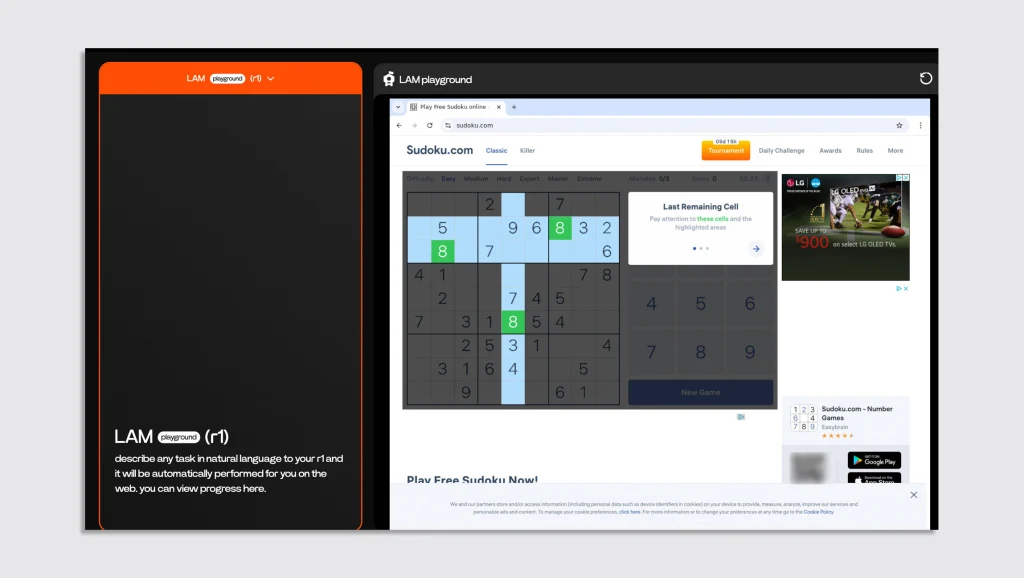
I was tempted to have it assemble lists of things for me in a Google Doc—like stories I’d written on various topics—basically treating this smart web crawler as a fully automated version of Notion. But the system doesn’t store logins at the moment, and juggling these tasks manually through their little browser portal is infeasible.
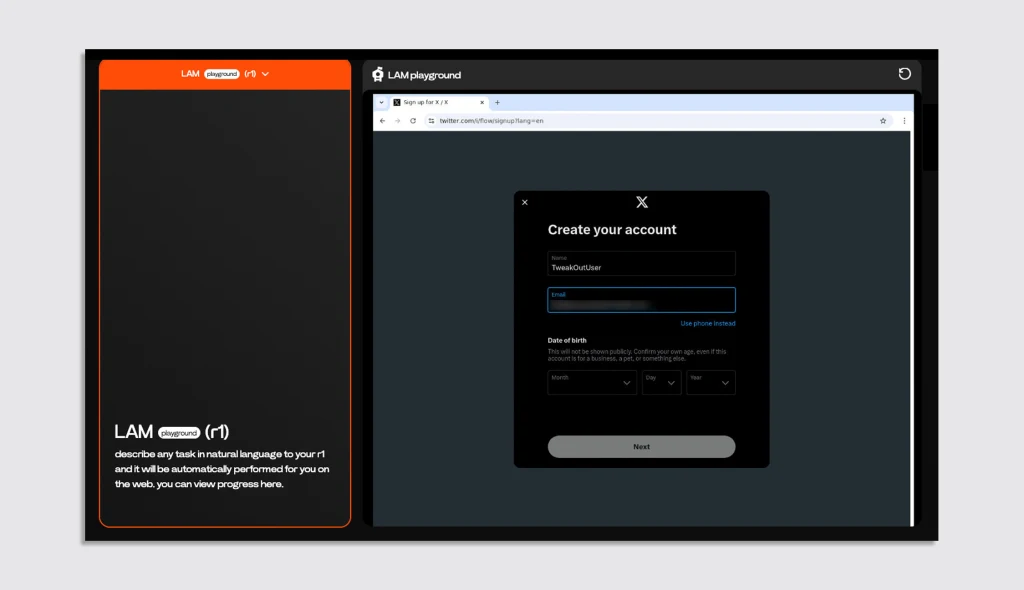
The idea of an AI web genie is interesting. Companies like Adept are already considering how AI can reshape the design of any website, but the promise of machines that can navigate tricky UX themselves—”unsubscribe me to Hulu until The Bear comes back for the next season!”—is even more appealing. For an AI to have agency, though, it doesn’t only need to get every step right; it needs to have deep access to your life (and logins).
Out of the box, Rabbit promised fresh thinking. Instead, it gave us Uber and DoorDash apps on a walkie talkie. While the LAM Playground is a barely baked product at best, it feels like an early proof point: the young company is best served leaning into the quirky. Rabbit’s LAM Playground obviously has a lot to learn, but it’s also something of a teaching tool for us. In a world of black box AI systems, it’s offering both a peek into the machine, and an invitation to experiment. Playing with rabbits might still be fun.






















